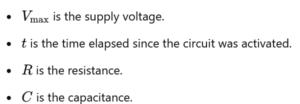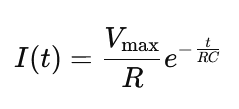
Within the domain of electrical circuits, two key components are resistors and capacitors. When arranged in series, they establish an intriguing dynamic that significantly impacts numerous electronic applications. The series arrangement of a resistor and capacitor presents a captivating and useful dynamic, applicable in areas such as timing circuits and signal filtering. Let’s examine the intricacies of their collaboration.
What is the outcome of connecting a resistor and capacitor in a series configuration?
The arrangement of a resistor (R) and a capacitor (C) in series leads to the establishment of an RC circuit. This setup is commonly found in a range of electronic devices, including audio systems and filters used in communication technologies. A key feature of an RC circuit is its capacity to affect the timing of a capacitor’s charging and discharging processes.

RC circuits demonstrate great versatility and are employed in various applications.
Assessing Voltage and Current in a Series RC Circuit
The following formulas are utilized to compute the voltage and current in a series RC circuit at any specific time:

Where:

2. Present Current in the Circuit (I):

As the capacitor undergoes charging, the current experiences an exponential decline, starting from its highest level at the moment the voltage is introduced.
3. Voltage measured across the resistor.

The unique integration of resistors and capacitors in RC circuits is essential for numerous electronic applications. The capability to manage charge flow and adjust signal features makes them crucial for various applications, such as filtering, timing, and signal processing. Comprehending the interaction between a resistor and a capacitor in series can offer valuable insights into the functionality of numerous everyday electronic gadgets.
Indian Institute of Embedded Systems – IIES